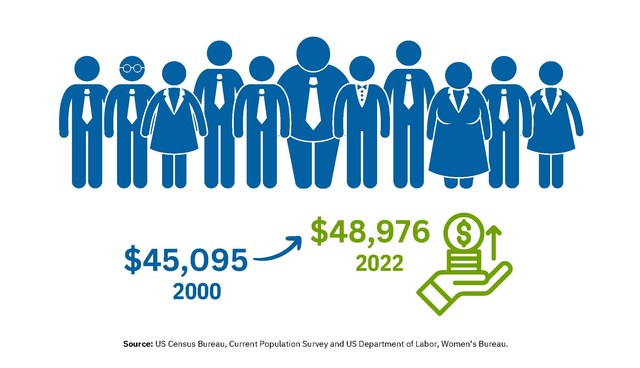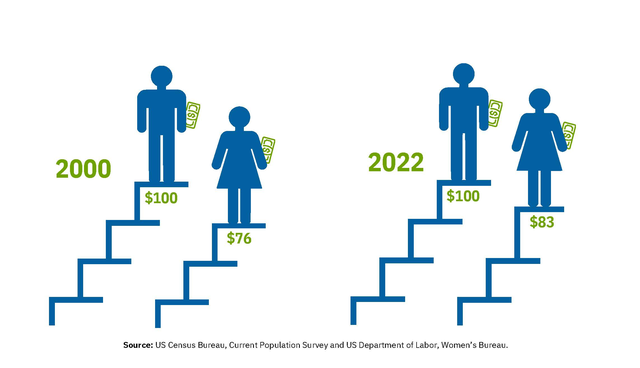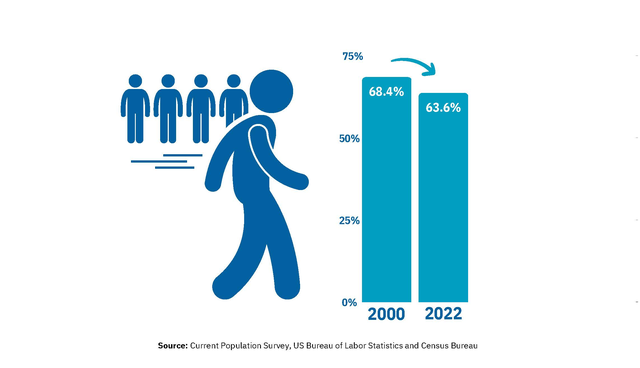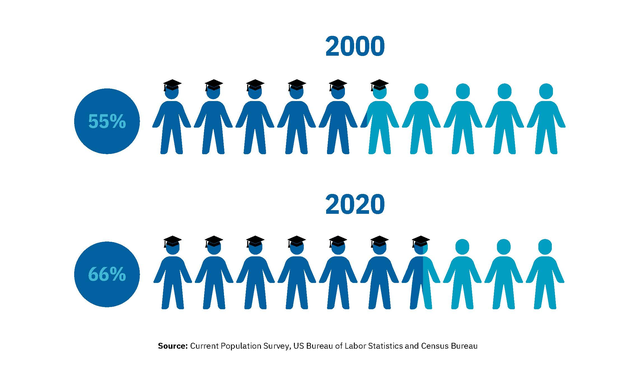
Then and Now: Key Trends and Transformations in the 21st Century Labor Market
Nyerere Hodge, Stuart Andreason, and Carl E. Van Horn
September 7, 2023
https://doi.org/10.29338/wc2023-02
Download the full text of this paper (1,580 KB)
The US labor market has experienced significant changes since the turn of the century. Some of the most profound changes were driven by technology, others shaped by business, policy, and shifting social norms. Two enormous economic shocks, the Great Recession of 2007–2009 and the pandemic recession of 2020, also drove changes in the economy and labor market. At the time of this writing, the Federal Reserve has been working to bring down inflation rates that last year reached a 40-year high. These major developments have transformed the nature of work and opportunities for American workers. For some workers with advanced education and technological skills, these changes brought enhanced opportunity and increased ability to weather economic disruptions. For some workers with less formal education and skills training, their ability to obtain stable, family-sustaining jobs became more challenging.
In this three-part series, we bring together labor market, workforce, occupational, and educational trends since 2000 to tell a story of American workers through data. This is primarily a decennial retrospective, but in some sections we include additional years to shape a complete story. We explore these data broadly and granularly with a demographic lens, recognizing that general trends are not experienced universally across groups. We identify where opportunities for some workers have improved and where there may be a need for additional efforts to increase opportunities for enhanced economic mobility.
This is a story told primarily through charts and tables that serve as a visual depiction of how workers, on average, are experiencing the labor market. We bring together two decades of data and hope this informs workforce practitioners, policymakers, business leaders, and others as they double down in areas where the trends show positive signs of improvement and continue as change agents in areas where the trends are stagnant or regressive.
The three parts of this series are as follows:
- Earnings
- Labor Force Participation
- Unemployment
- Educational Attainment
Part 1: Key Trends and Transformations in the 21st Century Labor Market
- Unemployment Insurance
- Unemployment Spells
- Health Insurance Coverage
- Retirement Benefits
Part 2: The Evolution of Key Worker Support Systems in the 21st Century
- Earnings by Educational Attainment
- College/University Tuition
- Higher Education Grants and Loans
- Funding at Historically Black Colleges and Universities and Tribal Colleges and Universities
Part 3: The Changing Landscape of Education Outcomes and Funding in the 21st Century
Part one looks at big labor market trends. We explore how median earnings have changed over time and whether they have kept up with inflation. We illustrate labor force participation and unemployment trends. We also explore whether achieving higher education benefited all workers. We explore these trends in the aggregate to understand the country’s direction as a whole, but with a demographic lens so we can see how experiences and outcomes have varied for different groups of workers, ultimately to better support an economy that works for all.
Part two reviews the uptake of unemployment insurance over the last two decades and the affect pandemic-era policy had on coverage. It also looks at changes in health care coverage and trends in retirement savings approaches.
Part three highlights the increasing earnings disparity between workers with and without a college degree. We also trace tuition increases over the last two decades and how grant aid and student loan reliance changed in conjunction. We also illustrate funding trends to historically Black colleges and universities (HBCUs) and Tribal Colleges and Universities (TCUs).
We proceed with a preview of Part 1: Key Trends and Transformations in the 21st Century Labor Market :
The infographics below are an aggregated preview of some of what is covered in the full report. This graphic illustrates that over the last 22 years inflation-adjusted median earnings for full-time, year-round workers, aged 18 and over increased from $45,095 in 2000 to $48,976 in 2022. You’ll see in the report that earnings flucated over the last two decades, but were almost 9 percent higher in 2022 than in 2000. You will also see that earnings peaked in 2020, but declined in part due to inflation.

We also see the gender pay gap improve. In 2000, female workers earned $76 for every $100 males earned. By 2022, it narrowed to $83 for every $100.

Tracking the labor force participation rate has received increased scrutiny since COVID-19 pandemic lockdown orders began to be lifted and as employers reported labor shortages. Our review shows employers’ sentiments were not just anecdotal; labor force participation indeed declined from 2020 to 2021, but has been declining since 2000. As seen in the infographic below, labor force participation was 68.4 percent for full-time, year-round workers, aged 18 and over in 2000 and declined to 63.6 percent by 2022. In chart 5 of the report, you will see periods of relative stability and an upswing in 2022 that rebounded participation past its 2020 rate.

The infographic below shows that more Americans are going to college today and more workers in the labor market have college experience than in 2000. At the turn of the century, 55 percent of workers had some college experience or a bachelor’s degree—by 2020, it reached two in three workers.

The full report explores these topics and others in more detail and provides demographic breakouts by gender, race, and ethnicity.
Nyerere "Nye" Hodge is a senior research analyst for community and economic development in the Atlanta Fed's Center for Workforce and Economic Opportunity. Stuart Andreason is managing director of workforce Innovation at the Burning Glass Institute. Carl Van Horn is distinguished professor of public policy at Rutgers University and director of the Heldrich Center for Workforce Development at Rutgers.


